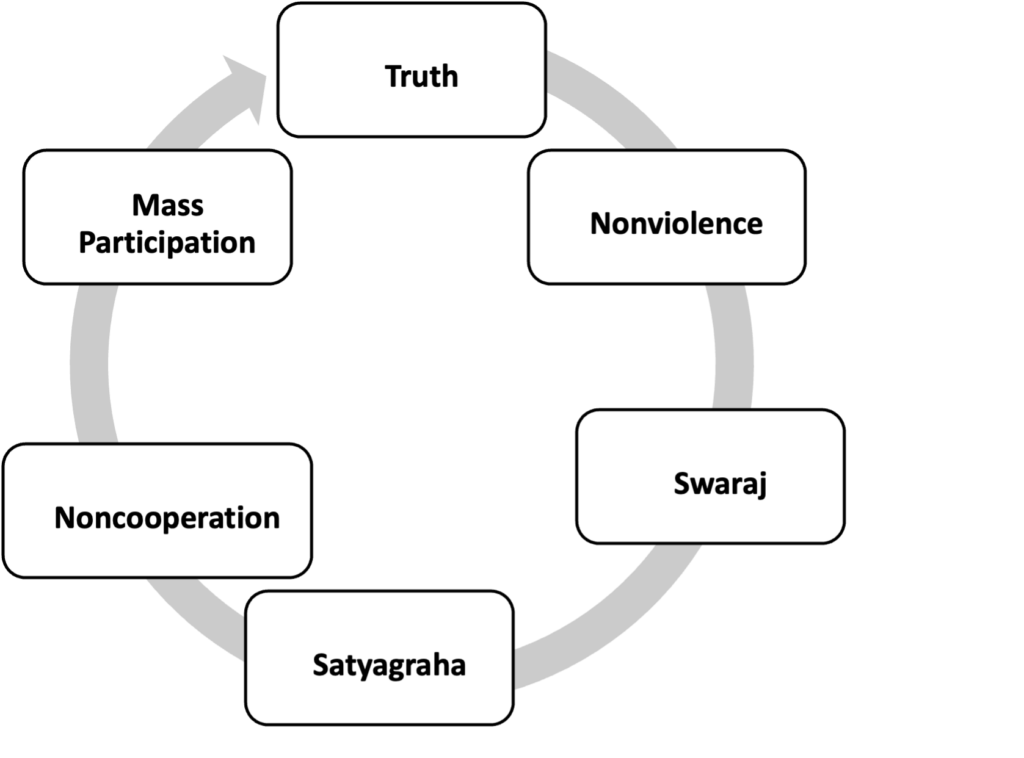28 July 2023 : Daily Answer Writing
Mains Answer Writing
One of the key components of these exams is the written test, which consists of a number of essay and comprehension questions. Candidates are expected to write clear and well-structured answers that demonstrate their knowledge and understanding of the topics being tested.
28-July-2023
Q. The August movement was totally un-Gandhian in its form and intention. Critically analyse. (250 words)
Solution
Introduction
In July 1942, the Congress working committee met at Wardha and adopted the ‘Quit India Resolution’ authorising Gandhi to take charge of the mass movement. The resolution was to be approved by the AICC meeting in Bombay in August.
On 8 August 1942, the AICC ratified the Quit India resolution in its meeting at Gowalia Tank Maidan, Bombay.
Gandhian method of movement: 
Methods used in the Quit India movement
- Parallel Governments
- This was a significant feature of the Quit India Movement. It showed the support of ordinary people towards the indigenous institutions and structure of power. Parallel governments were established in several places in the country.
- For example:
- In Balia, in Eastern Uttar Pradesh, a parallel government was formed under Chittu Pandey.
- The Jatiya Sarkar was established in Tamluk in the Midnapur district of Bengal.
- ‘Azad Government’ in Ahmedabad and one formed by Rammanohar Lohia on the Nepal border.
- This was totally a unique feature of the Quit India movement, which was never observed in any other Gandhian movements.
- Underground Activities
- An underground network was being consolidated in the various part of the country, which was a very special feature of this movement.
- For example:
- In Bombay, Congress Radio was being operated by Usha Mehta, whose broadcast could be heard as far as Madras.
- The underground activities involved the disruption of communications by blowing up bridges, cutting telegraph and telephone wires and derailing trains. There were also some instances of attacks on police and informers.
- Violent nature of the movement
- In some places, huge crowds attacked police stations, post offices, courts, railway stations and other symbols of government authority, and forces were used hugely.
- For example:
- National flags were forcibly hoisted.
- The greatest level of violence occurred in Bihar and the eastern United province.
- Less conservative:
- The absence of the political elite at the forefront is why the movement was less conservative. The movement was in the hands of the subaltern class.
- For example :
- Leaders like Gandhi, Nehru, Patel, and others were detained.
- C Rajagopalachari resigned because he did not support complete independence.
- It was the most radical and violent of all the previous struggles.
- Unlike the previous movements, which were more prominent in urban areas, this time, the labour class and poor, who were hit hardest by the rising inflation and food shortage, participated enthusiastically.
Gandhian features in quit Indian movement:
- Nyayadan Mandals were organised to provide justice, Prohibition was enforced, and ‘Gandhi marriages’ (inexpensive and invitation to untouchables) were organised in the Satara.
- Even Gandhiji refused to condemn the violence by the people as he argued that it was a reaction to much bigger violence by the state.
- There were many people in the Congress, including some staunch Gandhians, who believed that the peculiar circumstances warranted the use of violence.
- Some believe that there is nothing wrong with sabotaging communication lines or blowing up bridges if it does not cause loss of human life.
- Mass Participation in the Quit Indian movement is the most significant feature. The common people showed unparalleled heroism.
- The ultimate aim of the movement was to attain Swaraj following the path of
Conclusion
The Quit India Movement put the demand for complete independence as the immediate agenda of the movement, a brainchild of Mahatma Gandhi. So we can not deny his involvement in it. After this movement, there was no turning back, and future negotiations with the British would involve nothing less than complete independence.
Upload Answer here
For Enquiry

28 July 2023 : Daily Answer Writing

27 July 2023 : Daily Answer Writing

26 July 2023 : Daily Answer Writing

25 July 2023 : Daily Answer Writing

24 July 2023 : Daily Answer Writing

21 July 2023 : Daily Answer Writing

20 July 2023 : Daily Answer Writing

19 July 2023 : Daily Answer Writing

18 July 2023 : Daily Answer Writing

17 July 2023 : Daily Answer Writing



